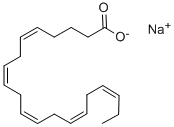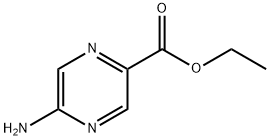The US EPA's second annual report on PFAS control progress is crucial. It makes one wonder: Are there new regulations on PFAS emissions from industries like manufacturing and waste management? For instance, will they set stricter limits on how much PFAS can be released into the air or water? Also, might there be new requirements for companies to report their PFAS usage and disposal? Since PFAS are 'forever chemicals' and harmful, will the EPA allocate more funds for research on better ways to detect, remove, and destroy them? And in terms of environmental justice, will there be new measures to ensure disadvantaged communities affected by PFAS get more support for cleanup and access to clean water?
In the second annual report on the progress of PFAS control, what new measures does the US EPA have?
Related Encyclopedia
Related Products More >
-
- 963-39-3
- equest For Quotation
-
- 956266-24-3
- equest For Quotation
- 25kg/ea
-
- 955114-24-6
- equest For Quotation
- 25kg/Cardboard Drum
-
- 917511-90-1
- equest For Quotation
- 25kg Drum
-
- 908121-04-0
- equest For Quotation
- 25kg/Bag
-
- 9050-30-0
- equest For Quotation
- kg
-
- 9045-22-1
- equest For Quotation
- 25kg/Cardboard Drum






 沪ICP备2021018848号-5
沪ICP备2021018848号-5

First off, when it comes to new regulations on PFAS emissions from manufacturing and waste management industries, it's highly likely. Given how harmful PFAS are, the EPA has been under a lot of pressure to step up its game. They've probably realized that the old limits just aren't cutting it anymore. So, yeah, we could very well see stricter limits on how much PFAS can be released into the air or water. Just think about it, these 'forever chemicals' have been building up in our environment for ages, and it's about time we put a real stop to it. If they don't set stricter limits, PFAS will keep polluting our air, getting into our water sources, and potentially harming our health.
As for new requirements for companies to report their PFAS usage and disposal, that would be a great move. Right now, it's kind of a black box. We don't really know how much PFAS is out there and where it's all coming from. By making companies report this information, the EPA can get a better handle on the situation. It's like shining a light in a dark room. Once they know which companies are using and disposing of PFAS, they can target their efforts more effectively. Maybe some companies are using way more than they should and not disposing of it properly. With reporting requirements, they'll have to be more transparent.
Now, about the funds for research. Absolutely, the EPA should allocate more money for research on detecting, removing, and destroying PFAS. We need better technology to find these chemicals, especially since they're so hard to detect. And once we find them, we need more efficient ways to get rid of them. There are some methods out there, but they're either expensive or not very effective. With more funds, scientists can come up with new and improved ways. Maybe they'll find a chemical reaction that can break down PFAS into harmless substances, or a new type of filter that can trap them in water more efficiently.
Finally, environmental justice is a huge issue. The disadvantaged communities that are often hit the hardest by PFAS pollution definitely need more support. The EPA should definitely have new measures in place. They could provide more funding for cleanup efforts in these areas. Maybe set up mobile water treatment units so that people in these communities can have access to clean water right away. And they could also offer educational programs to teach the people in these communities about PFAS, how it affects their health, and what they can do to protect themselves. Overall, the EPA's second annual report on PFAS control progress could be a game-changer if they address all these important aspects.
As for new requirements for companies to report their PFAS usage and disposal, that also makes a lot of sense. Right now, we don't always know exactly what's going on. If companies had to be more upfront about how they're using and getting rid of PFAS, it would be easier to keep an eye on things. It could help the EPA figure out where the biggest problems are and take action.
PFAS are "forever chemicals," and that's really scary. Given that, I bet the EPA will allocate more funds for research. We need better ways to detect these chemicals, especially in places where people might not even realize they're being exposed. And finding better ways to remove or destroy them is crucial. If we can't get rid of them, they'll just keep building up in the environment.
When it comes to environmental justice, that's a big deal too. Disadvantaged communities are often the hardest hit by PFAS contamination. They might not have the resources to fight back or clean up the mess. So, I hope there will be new measures to make sure these communities get more support for cleanup. They need access to clean water, and they need it fast. The EPA should be working hard to make sure everyone, no matter where they live, is protected from the dangers of PFAS. It's not just about following the rules; it's about making sure people are safe and healthy. We all deserve a clean environment, and it's time to take action.
I'm also wondering if there might be new reporting requirements for companies. It's only fair that they should have to disclose how much PFAS they're using and how they're disposing of it. That way, we can keep a closer eye on things and make sure they're not slipping through the cracks.
And speaking of keeping an eye on things, I hope the EPA is planning to allocate more funds for PFAS research. We need better ways to detect these chemicals, remove them from our water and soil, and ideally, find a way to destroy them completely. It's a tough challenge, but with enough resources, I believe we can make some real progress.
Lastly, I'm really hoping to see some new measures for environmental justice. Disadvantaged communities that are affected by PFAS contamination need more support for cleanup efforts and access to clean water. It's the right thing to do, and I'm optimistic that the EPA will step up and take action.